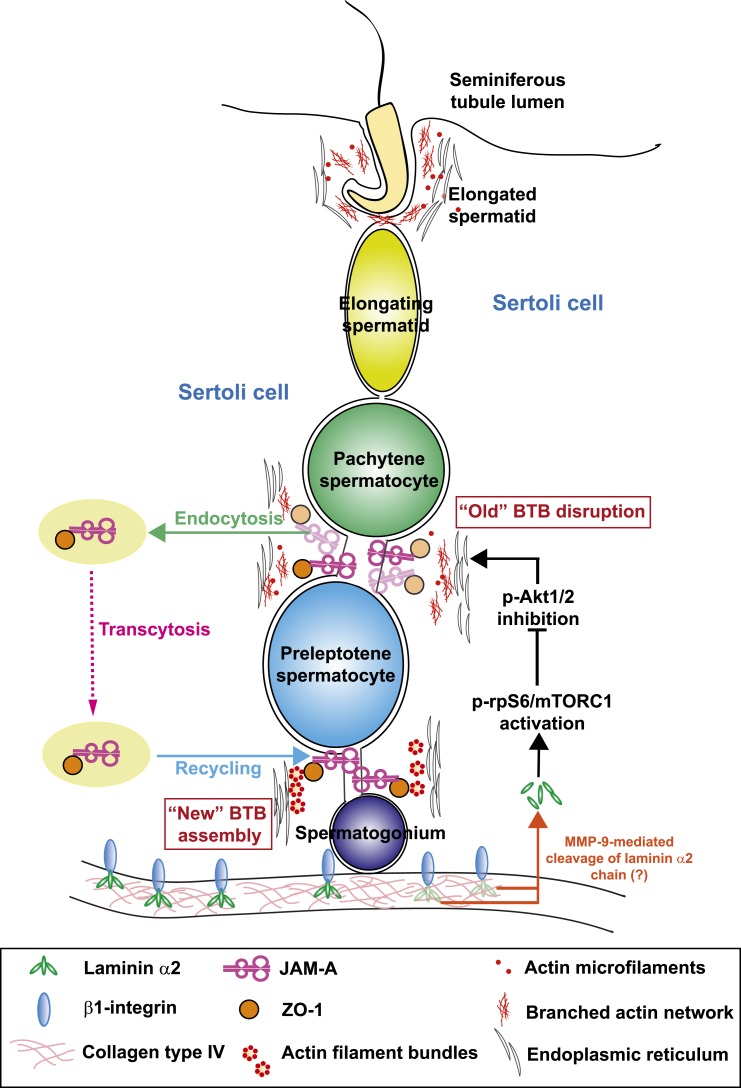Figure 7.
A schematic drawing that illustrates the likely signaling pathway by which laminin α2 at the basement membrane regulates Sertoli cell BTB dynamics in the seminiferous epithelium of rat testes. Based on the findings reported herein, it is likely that an 80-kDa fragment is released from laminin α2 chain in the basement membrane, mediated by MMP-9 earlier reported in the rat testis (58). Once released, this fragment is being transported across the seminiferous epithelium. When the level of this 80-kDa laminin fragment is reduced—such as following its knockdown by RNAi as reported herein or mediated by its intrinsic downregulation mediated by miRNAs (e.g., endogenouosly produced siRNA) or its reduced spatiotemporal expression during the epithelial cycle—rpS6 is also activated through an induction of p-rpS6, which, in turn, downregulates p-Akt1/2. The activation of this mTORC1/rpS6/Akt1/2 signaling pathway induces BTB remodeling, causing a gradual disassembly of the “old” BTB above the preleoptotene spermatocytes connected in clones. Both TJ and basal ES proteins at the “old” BTB undergo endocytosis, transcytosis and recycling as earlier reported (67–69) to facilitate the assembly of the “new” BTB behind the preleptotene spermatocytes. This thus facilitates remodeling of the BTB at stage VIII of the epithelial cycle to support the transport of preleptotene spermatocytes across the immunological barrier, illustrating the physiological significance of laminin α2 chain in this series of cellular event.

